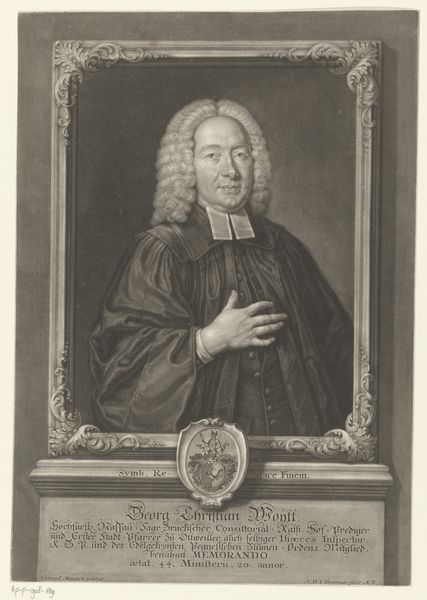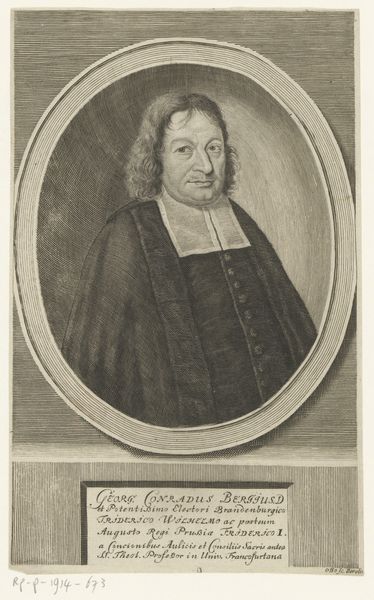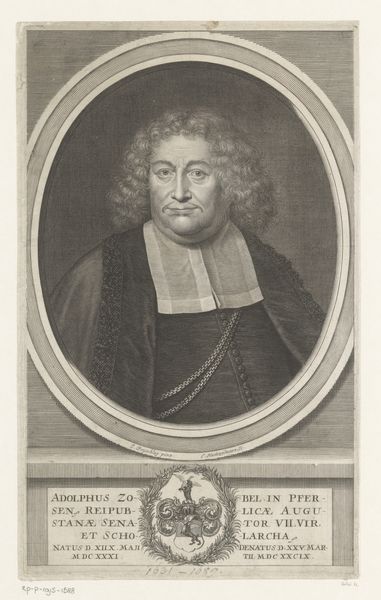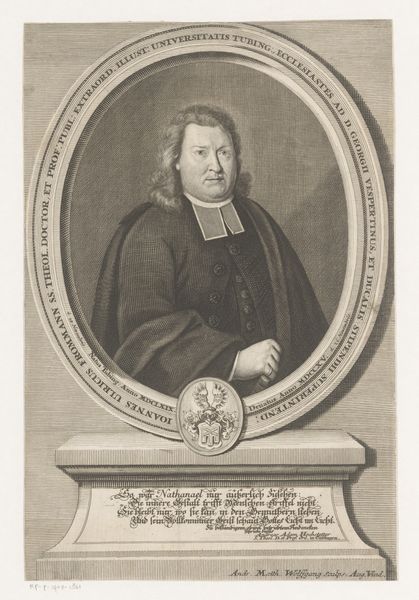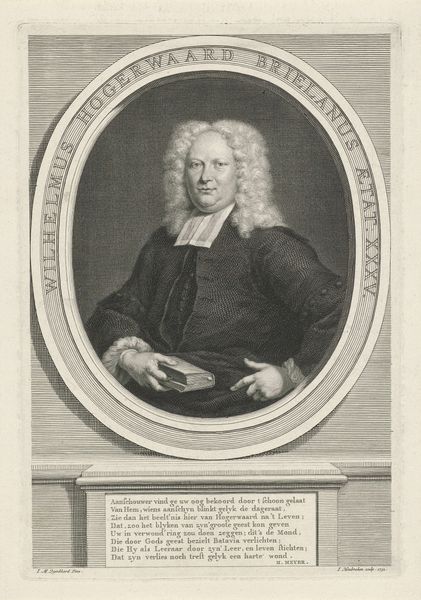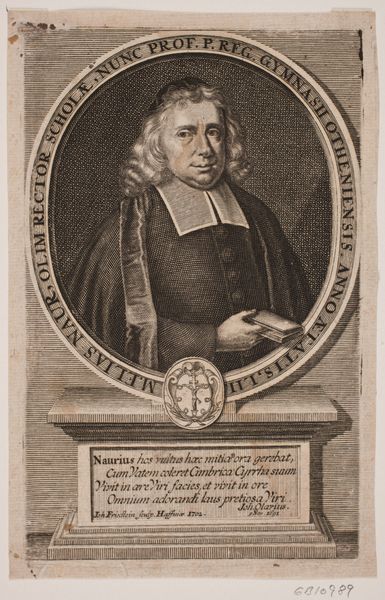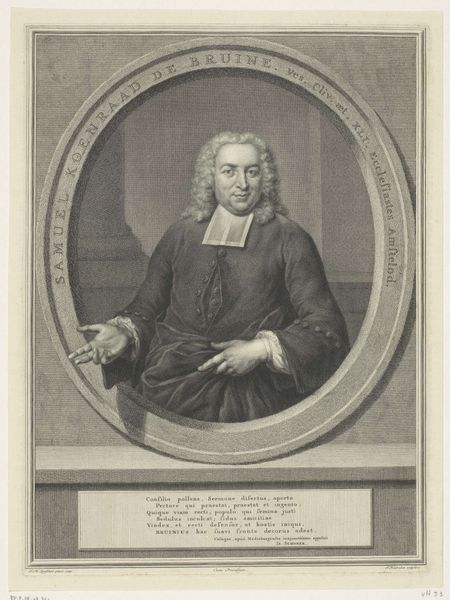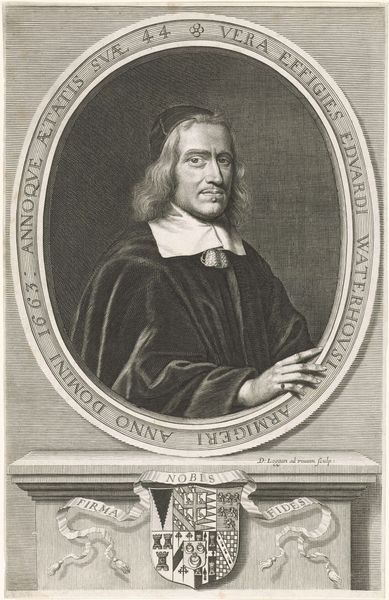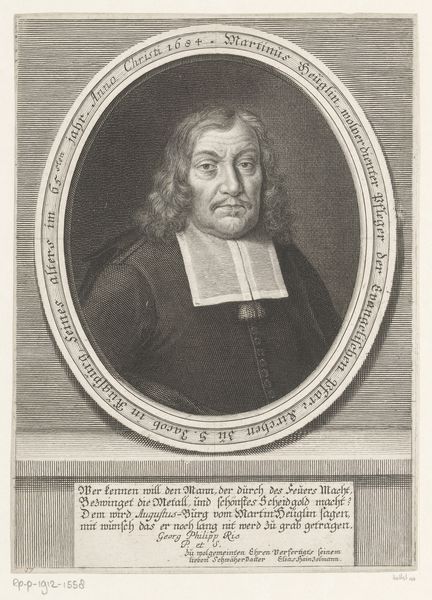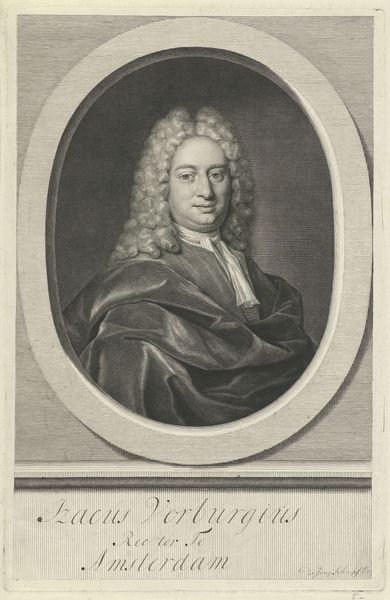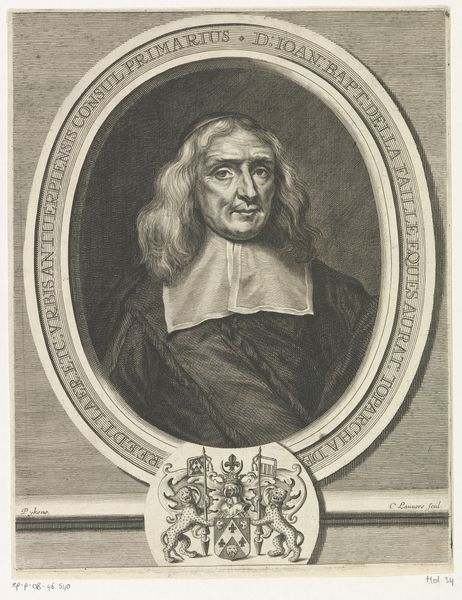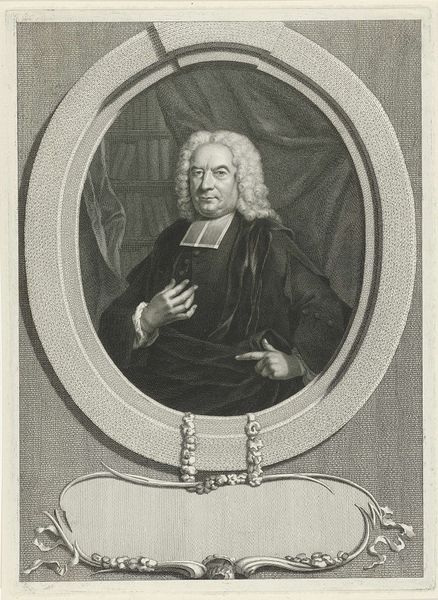
print, engraving
#
portrait
#
medieval
#
baroque
# print
#
old engraving style
#
history-painting
#
engraving
Dimensions: height 313 mm, width 208 mm
Copyright: Rijks Museum: Open Domain
Curator: Looking at this dignified portrait, I’m struck by the weight of history it carries, both personal and societal. Editor: Yes, it evokes a somber mood, doesn't it? The meticulous details, almost clinical in their precision, speak of a bygone era of formality and hierarchy. There’s a starkness to the etching, the man trapped within an oval of societal expectations. Curator: Indeed. What we have here is a print entitled "Portret van Theophil Wild," dating from perhaps 1698 to 1704. The engraver was Leonhard Heckenauer, and the medium is, as you pointed out, engraving. Let's delve a little into the public role of portraiture in this time. It served not only to document likeness but also to solidify social standing. Editor: Absolutely. Portraits were often commissioned by individuals seeking to broadcast their status, weaving narratives of power through visual representation. The sitter's attire, the very style of the portrait, acted as a signifier of their place in the world. In this case, his rather simple, yet imposing dress clearly announces him as part of the church and also something else, something...official. The framing of this portrait makes me wonder, how are social and political forces shaped the creation and reception of these works, like the framing oval or pedestal text? Curator: The oval frame around him serves to both highlight him but also almost holds him captive as a specimen. The text below memorializes his birth and death in a manner befitting public record. Editor: He occupies this space both literally, as a leader and scholar, and metaphorically as a representation of traditional masculine power. Who, historically, would have had access to these prints, how were these distributed and circulated, what impact did it have on the average person in the medieval or early Baroque eras to view an image of a figure such as Wild? What type of cultural influence did the person exert, given they took the time to circulate an artistic impression of him, for example? Curator: Considering that he occupied the roles of church, academia, and military it is most likely that prints of this nature circulated to specific people affiliated with such places. They would reaffirm and reinforce him as a subject. Editor: Precisely, and thinking about it, if the purpose of images is always communication, here, the message is overwhelmingly about solidifying a certain brand of patriarchal power and intellect. It definitely makes me curious to explore this piece through that lens. Curator: Understanding this context allows us to critically examine how images reinforce prevailing social narratives, something that very much holds weight even today.
Comments
No comments
Be the first to comment and join the conversation on the ultimate creative platform.
